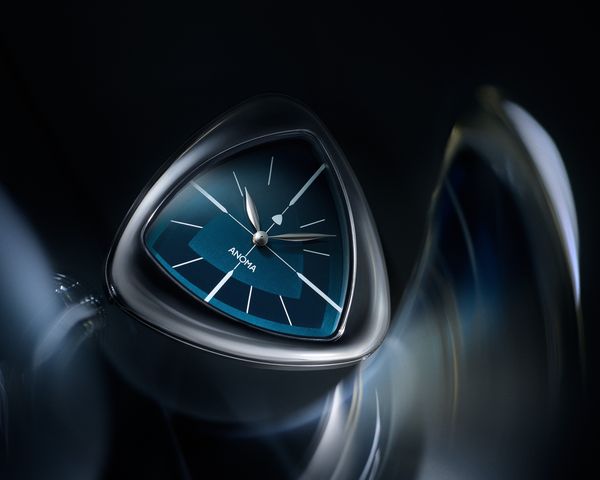- By Arthur Touchot
Shaped watches are having a moment. Finally, some would say.
Their reappearance happened quite suddenly, inside auction rooms at first, when collectors started raising their hands a little faster and a lot longer for dress watches, including (in fact, especially) oddly shaped ones.
High prices for shaped pieces by Cartier, Piaget, and Patek Philippe grew more frequent as collectors began opening to the possibility that sports watches were not the only ones worthy of their attention.
A period of record-breaking auction results then inspired watchmakers to re-interpret, re-introduce and even re-master shaped pieces found in their archives, now that interest felt more solid and widespread than before. Or to satisfy an interest that was always there, but had been cruelly under-served.
In any case, fans of shaped watches will tell you that we are witnessing a definitive renaissance of the shaped watch.
Enter the A1.
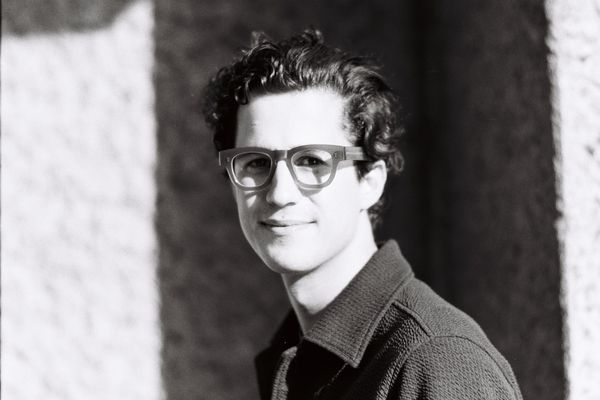
Conceived by Matteo Violet-Vianello, a Franco-Italian watch enthusiast turned creative director and founder of Anoma, the A1 is one of the year's most hotly anticipated shaped watches.
Matteo's journey in the world of watches began four years ago when he joined A Collected Man as a specialist. His role later evolved as he became head of content, and then head of business development. It was during that time that Matteo enjoyed handling some very interesting watches and developing his taste for shaped watches.
More recently, he's been working on the launch of Anoma, a new micro brand that promises to focus exclusively on atypical shapes, inspired by nature and design. It's an ambitious project for which he has decided to dedicate himself full-time, and he has decided to take this leap of faith with an equally brave design.
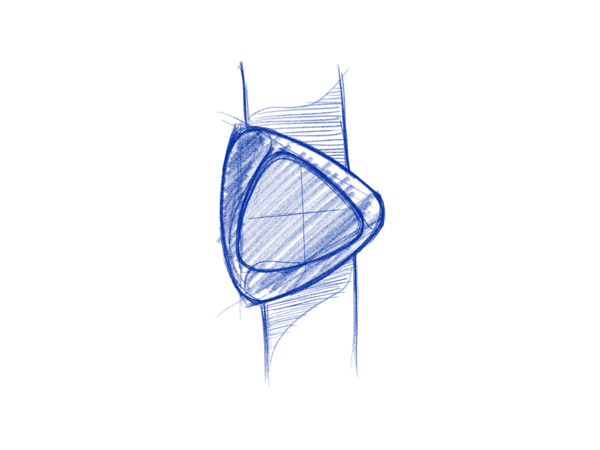
His first watch, the A1, features a triangular case crafted with meticulous attention to detail. At this point, you might be wondering how a triangular watch wears on the wrist? In fact, it's the first question that comes up any time a new shaped watch comes out (asked by fans of shaped watches and critics of the genre).
It's one that I was looking forward to answering for myself, so I reached out to Matteo, who thankfully had a working prototype available for me to try on for a short week.
Having previously enjoyed handling a couple of similar triangular pieces in the past, I had a rough idea of how the watch would sit on my wrist. I had tried both the Hamilton Ventura and the Patek Philippe Ref. 3412. Of the two, I preferred the watch designed by Gilbert Albert, which places the triangle on its side (same as the Ventura) with a vertical line going up the wrist on the side of the cuff (the Ventura places it on the other side).
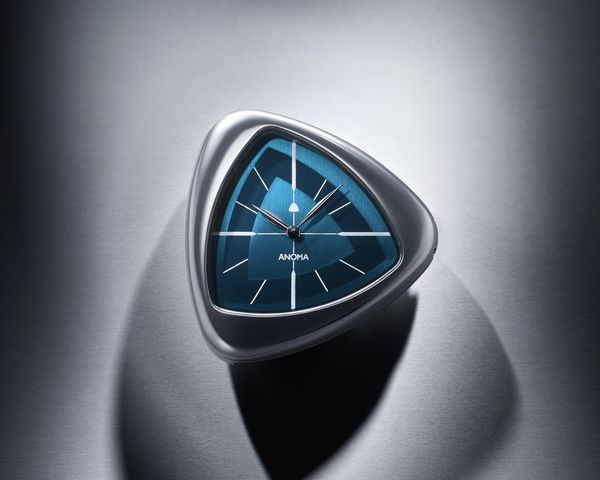
The A1 follows Albert's choice and borrows other elements, such as the Ref. 3412's crosshair dial. However, there's enough originality in Matteo's design that it feels like a fresh take on the triangular watch rather than a re-interpretation of a historical Patek Philippe model.
And that's because Matteo is pulling from sources of inspiration outside of watchmaking. Not long ago, when we spoke about Anoma, I was struck by the time we spent talking about travel, architecture, and design - all things that do not tick.
In fact, I had reached out to Matteo to talk about Charlotte Perriand, a French designer whose work our clients may already be familiar with. Phillips recently sold a free-form table made by Perriand in the 1950s, which Anoma highlights on its website as one of the inspirations behind the triangular shape of the A1.

Matteo discovered Perriand a few years ago, during one of his frequent nostalgic trips back to his hometown, Paris, while strolling around the Bastille district. There, he stumbled upon the Galerie Patrick Seguin, a furniture gallery that showcases and promotes the works of 20th-century French designers like Jean Prouvé, Charlotte Perriand, Pierre Jeanneret, and Le Corbusier.
"It was here that I first encountered Charlotte Perriand," said Matteo. "The more I researched her, the more I was captivated by her work and design philosophy. She was dedicated to challenging the status quo, drawing inspiration from diverse sources, and promoting a human-centric approach to design."

When I turned to Sofia Sayn-Wiggenstein, who heads the Design Department at PHILLIPS in London, to learn more about Perriand's work, she explained that her designs "were heavily influenced by the significant amount of time she spent in Japan in the 1940s and 50s."
An independent woman who often travelled alone around the world for work, Perriand was one of the pioneers of modernism. She was known for her daring personality and "great sense of appreciation for natural materials such as wood," said Sayn-Wiggenstein.
"Perriand's works are highly sought after for their ingenuity in elegance and simplicity, making them timeless pieces that promise functional enjoyment for generations," added Sayn-Wiggenstein.
"The idea to use Charlotte Perriand's free-form table as the inspiration for the A1 watch came to me quickly," said Matteo. "The rounded triangular shape of the table is so natural, reductionist, and timeless. It feels as though it could belong to either 1,000 years in the past or 1,000 years in the future."
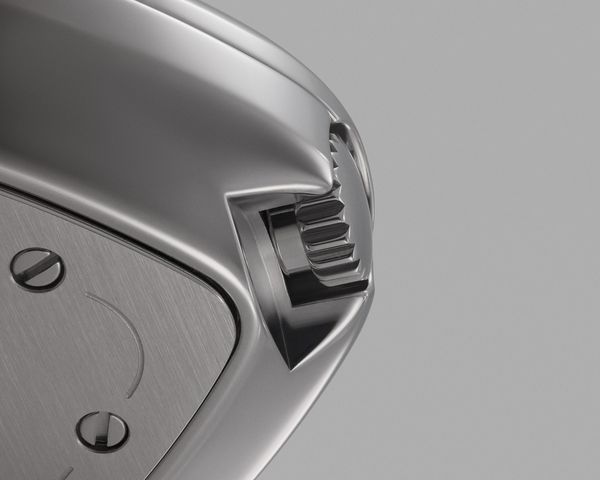
The A1 is built with that form and with that goal in mind. Whether it will stand the test of time is a question we can't answer. But what we can do is go back to the first (and arguably most important) question regarding A1. How does it actually wear on the wrist?
Perfectly.
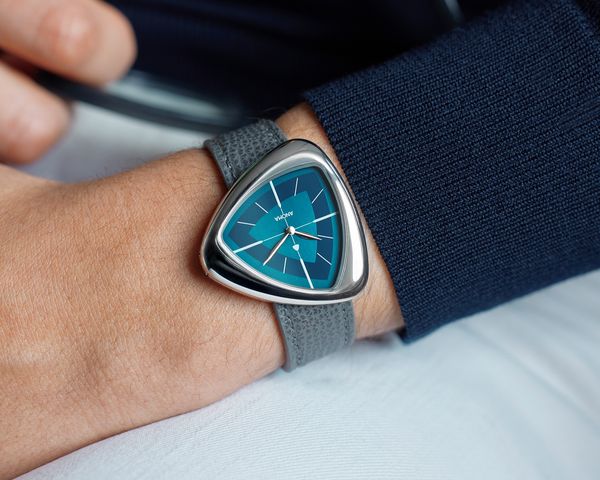
Practically (and this is more important than subjective opinion), the case measures 39mm by 39mm. To keep the watch's profile relatively low (9.45mm to be precise), Matteo deliberately chose a thin mechanical calibre more often seen in watches specifically made for women. The decision benefits the overall design by bringing it closer to the proportions enjoyed by vintage enthusiasts, and perhaps more importantly, by increasing its potential audience in terms of wearability.
Now, if you'll allow me to go back to being subjective, on the wrist, I loved how the watch feels because of the watch's shape, absence of lugs, and invisible crown.
I also loved how people around me reacted to it as well, even if the reactions were not unanimously positive. Taking the watch off and sharing the experience with others is part of the fun of owning a piece, especially an uncommon one.
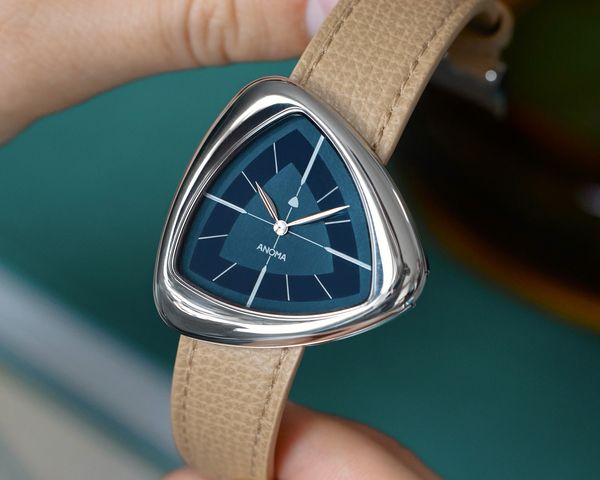
And the more I wore it, the more I enjoyed the experience. Once the novelty of the case shape wears off (spoiler alert, it doesn't), there's also a lot of joy to gain from the dial's reactions to light.
In fact, I found the watch extremely difficult to photograph (but you could probably tell that) because the dial changes colour very quickly, reacting with great fluidity to the movement of the wrist or the angle at which the light reaches the watch.

The colour fluctuates between a very dark, almost monochromatic blue and two distinct tones of blue (dark blue and light teal). New lines and triangles hidden within the dial reveal themselves when this happens, adding a dash of playfulness to a watch that aims to surprise.
So, well done, Anoma and congratulations, Matteo. I'm glad you took the risk of making a triangular watch to announce yourselves, and I hope you have plenty more sources of inspiration to develop a diverse but cohesive catalogue.
If you need any help, we're always happy to send you those from our Design department.
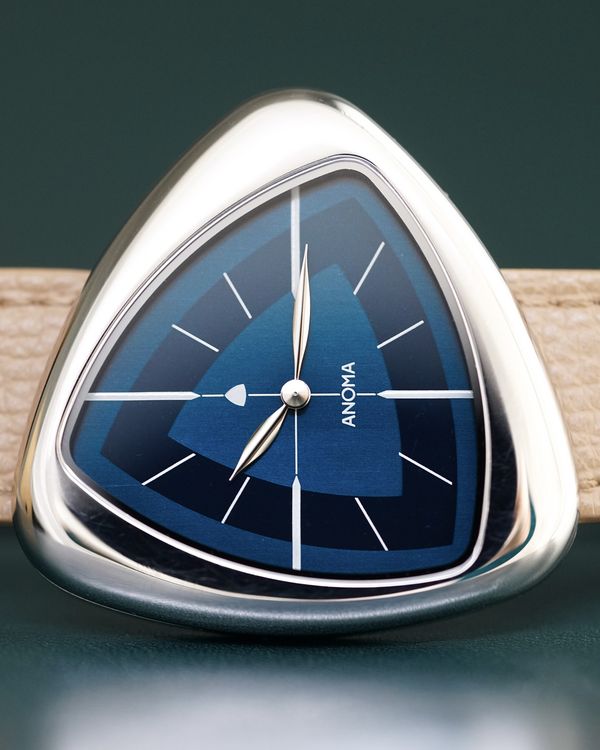
About Arthur Touchot
Arthur Touchot is a former journalist who specialized in the luxury market. Having earned a master’s degree in journalism at Northwestern University, Arthur combined his love of watches and words by becoming a regular contributor to The New York Times and the Financial Times at the start of his career, later becoming senior European editor at Hodinkee. In 2017, Arthur joined Phillips as International Head of Digital Strategy to lead the global content and digital marketing strategy of the auction house’s watch department, and has been involved in bringing some of the world’s rarest timepieces to auction.
Recommended Reading
Charlotte Perriand’s World: A Prototype from Two Icons
